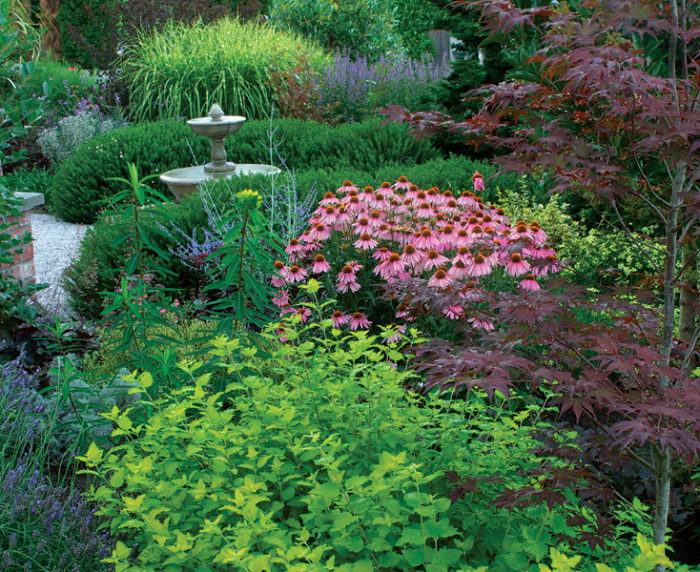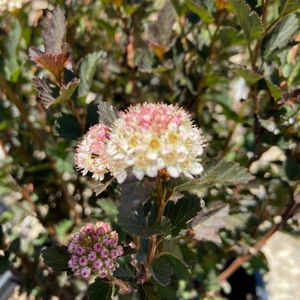Tiny Wine Ninebark: The Perfect Shrub For Your Garden
Tiny Wine Ninebark: The Perfect Shrub for Your Garden
If you're looking for a versatile and easy-care shrub that will add beauty to your garden, look no further than Tiny Wine Ninebark. This compact, bushy shrub is known for its dark bronze-maroon foliage and dainty white flowers. It's perfect for small spaces, and it's also deer-resistant, so you can enjoy its beauty without worrying about the animals.
In this blog post, we'll take a closer look at Tiny Wine Ninebark. We'll discuss its features, benefits, and how to care for it. We'll also share some tips on how to use it in your garden.
Features of Tiny Wine Ninebark
- Compact size: Tiny Wine Ninebark only grows to be about 5 feet tall and 4 feet wide, making it a great choice for small spaces.
- Dark foliage: The leaves of Tiny Wine Ninebark are a deep bronze-maroon color, which makes them stand out in the garden. The foliage is colorful all season long, so you'll enjoy its beauty from spring to fall.
- White flowers: In late spring, Tiny Wine Ninebark blooms with dainty white flowers. The flowers are arranged in clusters up and down the stems, and they add a touch of elegance to the garden.
- Deer-resistant: Tiny Wine Ninebark is deer-resistant, so you can enjoy its beauty without worrying about the animals.
Benefits of Tiny Wine Ninebark
- Versatile: Tiny Wine Ninebark can be used in a variety of ways in the garden. It's a great choice for borders, hedges, foundation plantings, and patio containers.
- Easy care: Tiny Wine Ninebark is very easy to care for. It's drought-tolerant and adaptable to a variety of soil conditions.
- Long-lasting: Tiny Wine Ninebark is a long-lived shrub. With proper care, it can live for many years.
How to Care for Tiny Wine Ninebark
- Sunlight: Tiny Wine Ninebark prefers full sun, but it can also tolerate partial shade.
- Water: Tiny Wine Ninebark is drought-tolerant, but it will appreciate regular watering during the hot summer months.
- Soil: Tiny Wine Ninebark is adaptable to a variety of soil conditions, but it prefers well-drained soil.
- Fertilizer: Tiny Wine Ninebark does not need to be fertilized often. A light application of fertilizer in early spring will help to promote new growth.
- Pruning: Tiny Wine Ninebark does not need to be pruned often. However, you can prune it after flowering to remove spent blooms and to shape the shrub.
Using Tiny Wine Ninebark in Your Garden
Tiny Wine Ninebark is a versatile shrub that can be used in a variety of ways in the garden. Here are a few ideas:
- Borders: Tiny Wine Ninebark makes a great border plant. It's compact size and dark foliage make it a striking addition to any border.
- Hedges: Tiny Wine Ninebark can also be used to create a hedge. It's dense growth and deer-resistance make it a good choice for this purpose.
- Foundation plantings: Tiny Wine Ninebark is a beautiful addition to foundation plantings. It's dark foliage and white flowers will add a touch of elegance to your home's exterior.
- Patio containers: Tiny Wine Ninebark can also be grown in patio containers. It's a great way to add color and interest to your patio or deck.
Conclusion
Tiny Wine Ninebark is a beautiful and versatile shrub that is perfect for small spaces. It's easy to care for and long-lasting, making it a great choice for any gardener. If you're looking for a new shrub to add to your garden, Tiny Wine Ninebark is a great option.
Tiny Wine ninebark is a beautiful, low-maintenance shrub that can add a touch of color and interest to any garden. But what plants should you plant next to it?
The good news is that Tiny Wine ninebark is relatively easy to pair with other plants. Here are a few suggestions:
- Coneflowers: These bright, cheerful flowers come in a variety of colors that will complement the red-purple foliage of Tiny Wine ninebark.
- Phlox: Phlox is another great option for companion plants, as it comes in a variety of colors and blooms at the same time as Tiny Wine ninebark.
- Dogwood trees: Dogwood trees add height and structure to a garden, and their white flowers will contrast nicely with the dark foliage of Tiny Wine ninebark.
- Azaleas: Azaleas are a popular choice for shade gardens, and their colorful blooms will brighten up any space.
- False indigo: False indigo is a tall, airy plant that will add a touch of drama to your garden. Its purple flowers will bloom in late summer, just as Tiny Wine ninebark's leaves are starting to turn color.
For more information about Tiny Wine ninebark companion plants, please visit Gardenia Inspiration.
FAQ of tiny wine ninebark companion plants
Question 1: What are some good companion plants for tiny wine ninebark?
Answer: Tiny wine ninebark is a versatile shrub that can be paired with a variety of other plants. Some good companion plants include:
- Perennials: Coneflowers, bee balm, daylilies, black-eyed Susans, yarrow, rudbeckia, coreopsis
- Deciduous shrubs: Lilac, spirea, barberry, hydrangea, azalea, rhododendron
- Evergreen shrubs: Juniper, pine, spruce, holly, boxwood
When choosing companion plants, it is important to consider the size, color, and bloom time of the plants. For example, you might want to pair tiny wine ninebark with tall, upright perennials like coneflowers or black-eyed Susans to create a vertical accent in your garden. Or, you might want to pair it with shorter, spreading perennials like bee balm or yarrow to create a more groundcover effect.
Question 2: What are the benefits of planting companion plants with tiny wine ninebark?
Answer: There are several benefits to planting companion plants with tiny wine ninebark. Companion plants can help to:
- Attract pollinators: Many of the plants that are good companion plants for tiny wine ninebark are attractive to pollinators, such as bees, butterflies, and hummingbirds. This can help to improve the pollination of your garden and attract beneficial insects.
- Improve the health of your plants: Some companion plants can help to improve the health of your tiny wine ninebark by attracting beneficial insects, repelling pests, or providing shade. For example, planting yarrow near tiny wine ninebark can help to repel aphids.
- Create a more visually appealing garden: Companion plants can help to create a more visually appealing garden by adding variety in terms of size, color, and texture. For example, planting tiny wine ninebark with coneflowers and black-eyed Susans can create a colorful and eye-catching display.
Question 3: How far apart should tiny wine ninebark and its companion plants be planted?
Answer: The distance between tiny wine ninebark and its companion plants will depend on the size of the plants. For example, if you are planting tiny wine ninebark with tall perennials like coneflowers, you will need to space them about 3 feet apart. However, if you are planting tiny wine ninebark with shorter perennials like bee balm, you can space them about 18 inches apart.
Question 4: When should I plant tiny wine ninebark companion plants?
Answer: You can plant tiny wine ninebark companion plants in spring or fall. However, if you are planting in spring, it is important to do so before the plant has started to grow new leaves. If you are planting in fall, you can plant the companion plants up until a few weeks before the first frost.
Question 5: How do I care for tiny wine ninebark companion plants?
Answer: The care requirements for tiny wine ninebark companion plants will vary depending on the type of plant. However, most companion plants will need regular watering, especially during the first year after planting. They may also need to be fertilized once or twice a year.
Image of tiny wine ninebark companion plants
5 different images of "tiny wine ninebark companion plants" from Pinterest:
- Coneflower: This perennial is a good choice for companion planting with tiny wine ninebark because it has similar flower colors and bloom times. Coneflowers also attract pollinators, which will help to keep your garden healthy.

- Bee balm: Another good choice for companion planting with tiny wine ninebark is bee balm. This perennial has bright pink or red flowers that bloom in the summer, and it also attracts pollinators.

- Goldenrod: Goldenrod is a native perennial that is drought-tolerant and easy to care for. It has bright yellow flowers that bloom in the summer, and it can help to attract butterflies and other beneficial insects to your garden.

- Russian sage: Russian sage is a tall, blue-flowered perennial that can provide a nice contrast to the dark foliage of tiny wine ninebark. It blooms in the summer and fall, and it is also drought-tolerant.

- Astilbe: Astilbe is a shade-tolerant perennial that has delicate pink or white flowers. It blooms in the summer, and it can help to add some lightness and airiness to a shady spot in your garden.

Post a Comment for "Tiny Wine Ninebark: The Perfect Shrub For Your Garden"